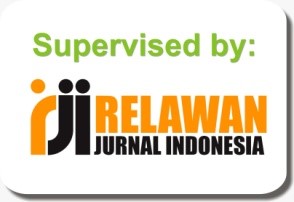Risk Return Analysis of FTSE Listed Select Stocks with FTSE100 Index
Risk return analysis
Abstract
This paper analyses the stock returns of FTSE 100 and a sample of selected companies within the index to determine the existence of interdependence and magnitude of the same. The companies are selectively chosen from certain primary sectors based on their influence on the economy. The idea is to understand if large firms have significant effect on the index. The study involves statistical analysis representing data over a 10-year period spanning 1st November 2011 to 31st October 2021), the data points include adjusted closing values of the index and the selected companies. Correlation and regression analysis is performed by taking the index as the dependent variable and the companies as the independent variable. The results are then analyzed from a variety of perspectives including Skewness, Kurtosis, Correlation Coefficients and Coefficient of Determination. Skewness and Kurtosis reveals the performance of returns as compared to the average. The results of the study reveal a net positive correlation is observed between the index and the companies. additionally, the regression analysis results showcase how certain sectors like defense have a significant relation with the index while others like supermarkets do not. Other interesting facts uncovered relate to how a certain cluster of firms compare as opposed to a single firm when analyzed in conjunction with the index. The results are summarized to come up with a conclusion on the relationship an index has with its constituents.
Downloads
References
Al-Hasan, M. A., Asaduzzaman, M., & Karim, R. A. (2013). The effect of dividend policy on
share price: An evaluative study. IOSR Journal of Economics and Finance, 1(4), 6–66. https://www.iosrjournals.org/iosr-jef/papers/vol1-issue4/B0140611.pdf?id=7841
http://faculty.ksu.edu.sa/sites/default/files/deter._of_divid_in_sa_2.pdf
Asquith, P., & Mullins, Jr, D. W. (1983). The impact of initiating dividend payments on
shareholders’ wealth. Journal of Business, 77–96. https://www.jstor.org/stable/2352747
Banerjee, A. (2018). Dividend Policy as a Corporate Communication and its Impact on Firm
Value Evidences from listed companies in Qatar Stock Exchange.
https://armgpublishing.sumdu.edu.ua/wp-content/uploads/2016/12/files/fmir/volume-2-issue-4/4.pdf
Black, F. (1976). The dividend puzzle. The Journal of Portfolio Management, 2(2), 5–8.
https://jpm.pm-research.com/content/2/2/5
Farrukh, K., Irshad, S., Khakwani, M. S., Ishaque, S., Ansari, N. Y. (2017). Impact of dividend policy on shareholders wealth and firm performance in Pakistan, Cogent Business & Management, ISSN 2331-1975, Taylor & Francis, Abingdon, Vol. 4. https://www.econstor.eu/bitstream/10419/206025/1/23311975.2017.1408208.pdf
Fernandes, M., 2015. Anticipatory Effects in the FTSE 100 Index Revisions, London: Queen Mary - University of London.
Gordon, M. J. (1959). Dividends, earnings, and stock prices. The Review of Economics and Statistics, 99–105. https://www.jstor.org/stable/1927792
Iminza, W. I. (1997). An empirical Investigation of the information content of dividend payment on share prices of publicly quoted companies. University of Nairobi. http://erepository.uonbi.ac.ke:8080/handle/11295/40008
Lintner, J. (1956). Distribution of incomes of corporations among dividends, retained earnings, and taxes. The American Economic Review, 46(2), 97–113. https://www.jstor.org/stable/1910664
Malombe, G. M. (2011). The effects of dividend policy on profitability of SACCOs with FOSAs in Kenya. University of Nairobi. http://erepository.uonbi.ac.ke:8080/handle/11295/12881
Marcelo Fernandes, J. M., 2015. Anticipatory Effects in the FTSE 100 Index Revisions, London: Queen Mary - University of London.
McCann, R., 2020. The effect of “Brexit” uncertainty on the FTSE 100 Index and the UK Pound, Glasgow: https://ssrn.com/.
Miller, M. H., & Modigliani, F. (1961). Dividend policy, growth, and the valuation of shares. The Journal of Business, 34(4), 411–433. http://www.jstor.org/stable/2351143
Ong, A. S. K., Lim, A. S., Lim, M. Y., Ow, Y. P. Y., & Tan, L. L. (2014). The impact of dividend policy on shareholders’ wealth: Evidence on Malaysia’s listed food producer sector (Doctoral dissertation). UTAR. http://eprints.utar.edu.my/1404/1/BA-2014-1106884.pdf
Pettit, R. R. (1972). Dividend announcements, security performance, and capital market efficiency. The Journal of Finance, 27(5), 993–1007. https://doi.org/10.1111/j.1540-6261.1972.tb03018.x
Rigar, S. M., & Mansouri, B. (2003). Determinants of financial practices among moroccan industrial firms. https://www.academia.edu/4351222/DETERMINANTS_OF_FINANCIAL_PRACTICES_AMONG_MOROCCAN_INDUSTRIAL_FIRMS
Rosini, L. & Shenai, V., 2020. Stock returns and calendar anomalies on the London Stock Exchange in the dynamic perspective of the Adaptive Market Hypothesis: A study of FTSE100 & FTSE250 indices over a ten-year period. Quantitative Finance and Economics.
Tiriongo, T. K. (2004). Dividend policy practices in companies listed at the NSE. University of Nairobi. http://erepository.uonbi.ac.ke:8080/handle/11295/22703














